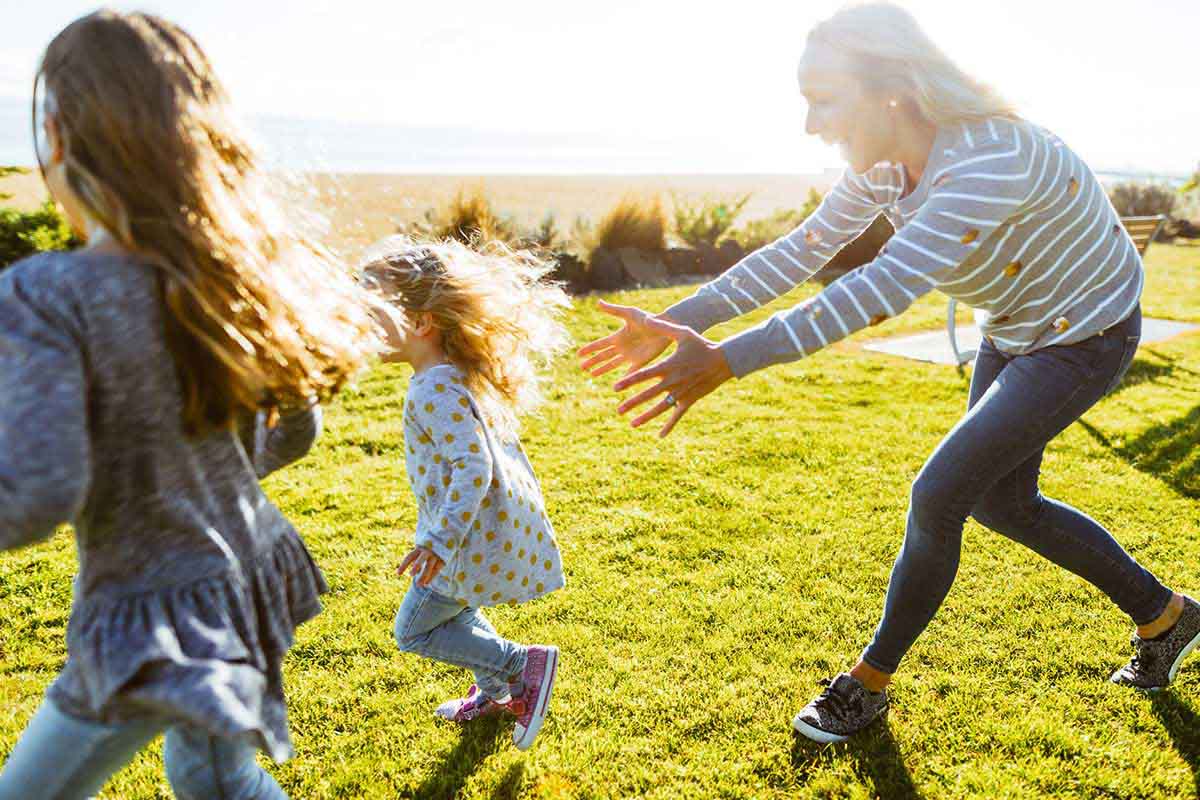
We all know that kids can be clumsy and uncoordinated but, according to paediatric physiotherapist, Nicole Pates, it’s all just part of growing up.
“As children grow taller, their position in space constantly changes and the brain needs to ‘recalibrate’ their spatial awareness,” she says. “This is why during growth periods, kids might appear clumsier.”
“For some children coordinated tasks, such as catching a ball, appear easy and graceful, while for others they may always look awkward and difficult.”
Pates notes that these children may struggle to keep up with playground games, trip over their own feet, misjudge the height of descending steps, bump into doors and hallways and avoid certain activities because of frustration.
“It can be hard for parents to identify coordination issues,” says Pates, “but the earlier any issues are identified, the easier it is to address the problem and help children during early stages of their growth.”
Here we explore some of the fun ways that you can help your child strengthen and build on their coordination.
Totem Tennis
Totem tennis is a fantastic activity to develop hand eye coordination, depth and speed perception, and visual tracking and awareness of your child’s body in space, relative to the ball and racquet.
“For children that are having difficulty with hitting the ball with the racquet, you can start off by trying to catch the ball instead,” suggests Pates.
To specifically focus on visual awareness and strengthening the muscles in their eyes, you can also encourage your child to lie on the ground and track the ball’s movements as it swings.
Twister
“The game of Twister is an oldie but a goodie,” says Pates, “and, for your child it can really help with improving and strengthening bilateral coordination.”
Bilateral coordination is the ability to use both sides of the body for different tasks in a controlled manner. Right hand on the red Twister spot and left leg on the blue is a pretty good place to start.
Pates notes that Twister improves body awareness and balance and also encourages your child to work across the midline. This is the ability to reach across the centre of the body with arms and legs.
Keep the Balloon Up
“A balloon is a great alternative for children who struggle to catch or hit a ball,” says Pates. “It reduces the speed and increases the timing window for the child to successfully catch and hit it.”
The aim of this game is to keep the balloon in the air, using hand eye coordination, depth and speed perception, reaction timing, body awareness and balance.
To increase the difficulty, Pates suggests adding more balloons or using a light ball, or moving about in different poses, such as a crab animal pose, standing on one leg, or lying or kneeling on the floor.
“Getting your child to hit the balloon as many times as they can or as little as they can in 30 seconds helps them understand how hard or soft they need to hit,” she says.
Obstacle courses
Obstacle courses are a fun way to work on your child’s coordination skills. Balancing on uneven or narrow surfaces, rolling, crawling and climbing all use vision, balance, body awareness, strength and motor planning.
“You can increase the challenge by making children go through in pairs or by hiding things throughout the course for your child to collect,” suggests Pates. “This encourages their peripheral visual field to work, something you need when a ball is coming to the side of you.”
“These days with lots of screen time, our peripheral visual field doesn’t get much of a work out, so encourage your child to use it when they can.”
Martial Arts
Coordination is one of the fundamental skills of martial arts.
“Martial arts teaches broad movements at first and then refines them through repetition by drawing your child’s attention to their body,” says Pates. “It helps children learn where their body is in space and how forceful movements need to be.”
Kicking, punching and blocking helps with hand eye coordination, and the movements themselves help the development of balance and control, as some positions are held for a significant time.
Relays
“For groups of children, relays with mixed activities can work on a broad array of skills to help with coordination,” says Pates.
Wheelbarrow walking works on strength and body awareness, while egg and spoon races work on balance, control, hand eye coordination and using the appropriate muscle force.
Leap frog over cones or other children works on depth perception, using the appropriate muscle force, strength and body awareness.
Skipping rope races work on using both sides of the body simultaneously, using the arms in a different motion to the legs, speed and depth perception by timing the rope with the jump and body awareness to use the right amount of muscle force to make the jump.